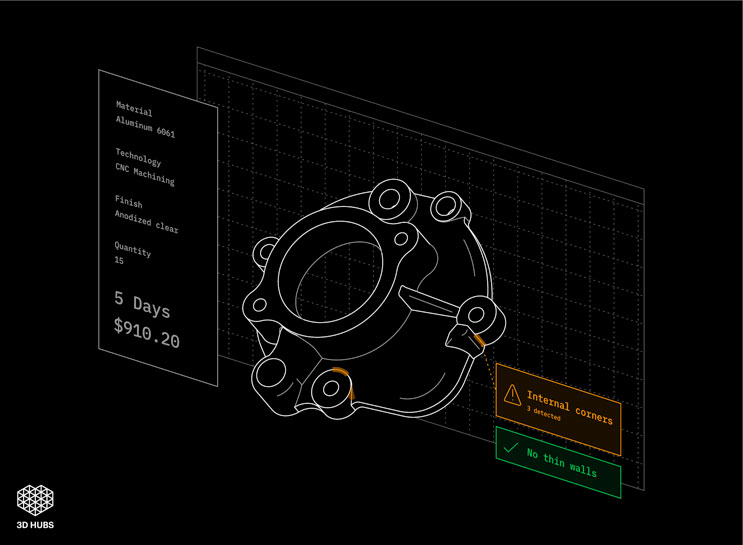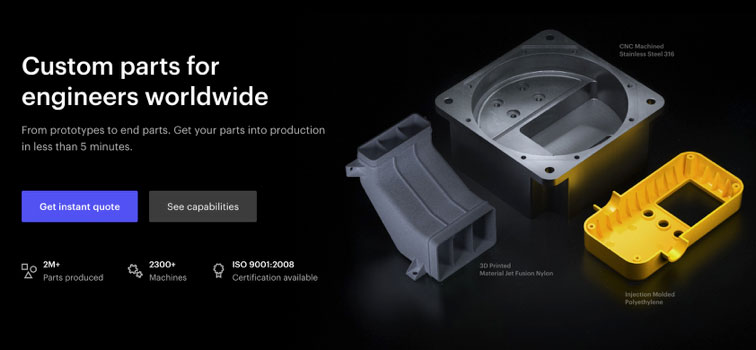August 5, 2019
CNC machining can be the perfect manufacturing process for mechanical engineers that want sturdy and accurate parts, but CNC services can also be expensive. One of the reasons CNC machining becomes more expensive is machining time, which can cost more than materials and finishes. As a result, one of the best ways to reduce machining costs is to reduce machining time. 3D Hubs has a powerful platform that allows engineers to upload designs and assess weaknesses before designs go into production. Here are some tips to reduce those CNC machining costs.
Thin walls can increase production costs for a couple of reasons. Anything less than the standard thickness (0.8mm for metal, 1.5mm for plastic) will usually require different tools. Not only do thin walls potentially compromise the structural integrity of the part, but they can be prone to breaking during the manufacturing process. Taking extra care around these thin walls can increase production time, driving costs up.
Wherever possible, deep cavities in designs should be avoided. As a general rule, the more material that needs to be removed, the longer the production time. Not only do cavities mean large sections of material, but they also may require special tools. 3D Hubs has the technology to make just about any adjustments needed, but drilling certain depths will cost more. To limit costs, all cavities should have a depth of no more than 4 times their length.

3D HUBS
Sharp corners can be costly with CNC machining. CNC tools have a cylindrical shape, and will, therefore, leave a rounded radius. Smaller tools can create smaller curves, but require more passes, which means more time and money. To keep costs down, the same radius can be used in all corners, and a radius should be at least 1/3 of the depth of the cavity.
Long threads can increase production time with special tools, and the end result likely won’t make the part any stronger. At maximum, the tread depth should be no more than 3 times the diameter. In the same realm, non-standard hole sizes with deeper lengths will also require special tools and production time.
Machine setups take time and often manual labor, which will usually cost more money, so minimizing the setup time can help engineers avoid larger costs. Designing parts that don’t require rotation and splitting them up so that they can be manufactured all in one setup and assembled later can make a huge difference in final costs.
Lastly, engineers can reduce costs by removing small details like lettering, and taking extra care when considering production material. Some materials can be machined quickly, but others will require twice as much time. Unless specific material is required, it’s worthwhile to consider other options.
3D Hubs can help engineers interested in CNC machining services with their designs and cost concerns quickly and easily. Using the 3D Hubs online platform, engineers can upload designs, receive feedback, and get a CNC quote within seconds. With this feedback, it’s easier than ever to make adjustments before going into production.

Custom parts for engineers worldwide.
In this episode, I sat down with Beejan Giga, Director | Partner and Caleb Emerson, Senior Results Manager at Carpedia International. We discussed the insights behind their recent Industry Today article, “Thinking Three Moves Ahead” and together we explored how manufacturers can plan more strategically, align with their suppliers, and build the operational discipline needed to support intentional, sustainable growth. It was a conversation packed with practical perspectives on navigating a fast-changing industry landscape.